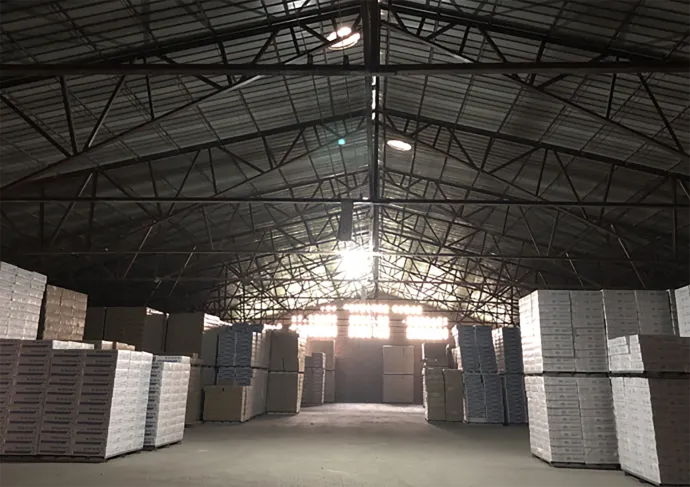- Afrikaans
- Albanian
- Amharic
- Arabic
- Armenian
- Azerbaijani
- Basque
- Belarusian
- Bengali
- Bosnian
- Bulgarian
- Catalan
- Cebuano
- Corsican
- Croatian
- Czech
- Danish
- Dutch
- English
- Esperanto
- Estonian
- French
- German
- Greek
- Hindi
- Indonesian
- irish
- Italian
- Japanese
- Korean
- Lao
- Malay
- Myanmar
- Norwegian
- Norwegian
- Polish
- Portuguese
- Romanian
- Russian
- Serbian
- Spanish
- Swedish
- Thai
- Turkish
- Ukrainian
- Uzbek
- Vietnamese
ພ.ຈ. . 25, 2024 07:50 Back to list
ceiling access panel door
Understanding Ceiling Access Panel Doors A Comprehensive Guide
Ceiling access panel doors are essential components in modern building designs, serving as convenient access points for maintenance and inspection of utilities and infrastructure hidden above ceilings. These panels provide an efficient way to gain access to spaces like ductwork, plumbing, electrical wiring, and HVAC systems. Whether you are a builder, contractor, or a homeowner, understanding the purpose, types, and installation processes of ceiling access panels can significantly enhance the functionality and maintenance of a property.
Purpose of Ceiling Access Panels
The primary purpose of ceiling access panels is to allow maintenance personnel easy access to critical systems without requiring extensive dismantling of ceilings. These panels offer a discreet solution, ensuring that the aesthetics of a building are preserved while facilitating the necessary maintenance of infrastructure. Easily removable or hinged, these panels help reduce downtime during repairs and prevent unnecessary damage to drywall or ceiling systems.
Moreover, ceiling access panels enhance safety. By providing designated access points, they help minimize the risk of accidents that could occur when maintenance workers attempt to gain access through less appropriate means. This focus on safety not only protects personnel but also safeguards the building's integrity.
Types of Ceiling Access Panels
Ceiling access panels come in various designs and materials, each suited for different applications. Here are some of the most common types
1. Drywall Access Panels These panels are designed to blend seamlessly with the surrounding drywall surfaces. They usually come with a lockable feature to prevent unauthorized access, making them ideal for residential and commercial spaces.
2. Metal Access Panels Constructed from durable materials like galvanized steel or aluminum, metal access panels are typically used in commercial settings where extra security and durability are required. They are also fire-rated, which adds an extra layer of safety.
3. Acoustic Access Panels These are specially designed for environments where sound control is essential, such as recording studios and theaters. Acoustic panels are designed to minimize sound transmission while providing access to the space above.
4. Lightweight Plastic Access Panels These panels are easy to install and are often used in residential applications. They provide a cost-effective solution for accessing minor utility spaces.
ceiling access panel door

Installation and Maintenance
Installing a ceiling access panel requires careful consideration to ensure it functions correctly and maintains the aesthetics of the space. Here are some fundamental steps to follow
1. Choose the Location Identify the most practical location for the access panel, ensuring it allows easy access to the areas needing maintenance, such as ductwork or plumbing.
2. Measure and Cut Measure the dimensions of the panel and cut the drywall carefully, ensuring a snug fit for the panel to prevent sagging and misalignment.
3. Secure the Panel Follow the manufacturer's instructions for securing the panel in place, using screws or adhesive as recommended.
4. Finishing Touches Once installed, tape and mud the edges if necessary, then paint to match the surrounding ceiling, allowing it to blend in seamlessly.
5. Regular Maintenance Although access panels are designed to be durable, regular checks can help identify any wear and tear. Ensure the hinges and locks are functioning correctly to maintain security and accessibility.
Conclusion
Ceiling access panel doors are a practical solution for maintaining the complex systems that lie hidden above our ceilings. Understanding their uses, types, and maintenance can help property owners and managers ensure that their buildings operate smoothly and safely. Investing in quality access panels not only streamlines maintenance tasks but also contributes to the overall safety and aesthetics of the property. Whether you are renovating an existing space or designing a new building, incorporating well-placed access panels in your plans can lead to long-term benefits. Embrace the convenience and practicality of ceiling access panels, and ensure your building remains efficient and accessible for years to come.
-
PVC Laminated Gypsum Ceiling Board OverviewNewsApr.11,2025
-
Mineral Fiber Ceiling Tiles Price Analysis and ComparisonsNewsApr.11,2025
-
Crafts of Mineral Fiber Ceiling Tile ManufacturingNewsApr.11,2025
-
Difference Between Gypsum and PVC CeilingNewsApr.11,2025
-
An Overview of Mineral Fiber Ceiling TilesNewsApr.11,2025
-
Advantages of PVC Gypsum CeilingNewsApr.08,2025







